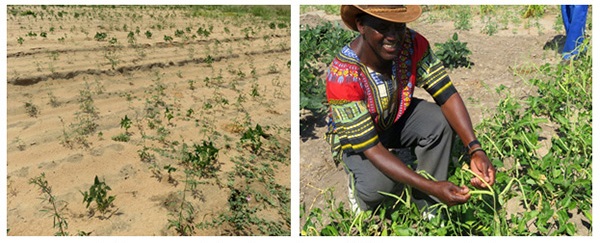Since 2013, pearl millet, or Mahangu as it is locally known, has been grown by subsistence farmers in many parts of northern Namibia where yields are extremely low because of unreliable and poor rainfall patterns (Figure 1).
Most of the crops are grown under rain fed conditions and the land is prone to severe soil degradation. Namibia has low and erratic annual rainfall between 300-700 mm. This situation has not only affected crops but also livestock production as there is a lack of grazing lands and feed. Desperate farmers have been taking grass from their thatched huts to feed their cattle and goats.
Pearl millet (Pennisetum glaucum), followed by cowpea (Vigna unguiculata [L.] Walp) are major staple food crops for people living in northern Namibia. Sorghum (Sorghum bicolour) is ranked third in economic importance. Cowpea is a nitrogen fixer and is inter-cropped with pearl millet and sorghum as it provides organic nitrogen fertiliser to the other crops. However, average yields of these crops are extremely low, ranging from 250 to 350 kg/ha for cowpea to 800-920 kg/ha for pearl millet. Yields are particularly low when drought spells occur. Existing varieties are no longer meeting farmer’s requirements as they are prone to pests and diseases, produce poor yields and are susceptible to changing climatic conditions such as drought and extreme heat stress. The Namibia Agricultural Research Plan (NARP) classified research projects on local and staple food crops, such as cowpea, pearl millet and sorghum, as priority areas for research and development.





